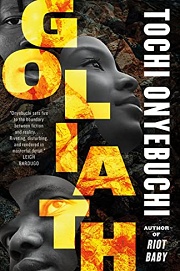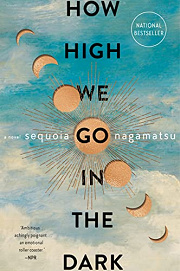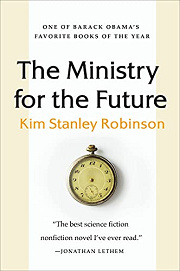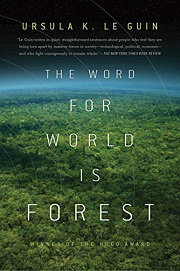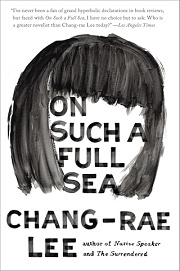Share your thoughts in a quick Shelf Talk!
Goliath by Tochi Onyebuchi
In a near-future America hollowed by climate collapse and abandonment, those left behind rebuild amid crumbling neighborhoods while orbiting elites eye a return to the world they fled. Through intimate, intersecting lives—builders, lovers, and artists carving meaning from ruin—Goliath explores home, power, and who gets to claim a future. It’s lyrical, urgent, and hauntingly human.
Have you read this book? Share what you liked (or didn’t), and we’ll use your answers to recommend your next favorite read!
Love Goliath but not sure what to read next?
These picks are popular with readers who enjoyed this book. Complete a quick Shelf Talk to get recommendations made just for you! Warning: possible spoilers for Goliath below.
In Goliath, did you enjoy ...
... mosaic, time-hopping vignettes that chart ordinary lives through a slow, world-altering collapse?
How High We Go in the Dark by Sequoia Nagamatsu
If the collage-like chapters in Goliath—from the brick-hauling crews in ruined New Haven to the off-world returnees sampling neighborhoods like tourists—hooked you, you’ll love the way How High We Go in the Dark drifts across decades and perspectives. Like the salvage scenes and street-level survival you followed on Earth while spacers hovered above, Nagamatsu’s linked stories keep circling back to grief, adaptation, and small acts of care as a plague reshapes society.
... near-future climate reckoning that mixes personal narratives with global systems change?
The Ministry For the Future by Kim Stanley Robinson
You were immersed in Goliath’s climate-scarred Earth—crumbling housing stock, poisoned air, and communities improvising with whatever materials they can scavenge while wealth escapes off-world. The Ministry for the Future widens that lens: from survivors of lethal heatwaves to activists and policymakers, it blends on-the-ground hardship like those New Haven blocks with audacious attempts to remake the world, echoing the tension between those left behind and those with the means to flee.
... stark depictions of gated privilege, displacement, and rebuilding community amid collapse?
The Parable of the Sower by Octavia E. Butler
If what stayed with you from Goliath was the brutal divide between Earthbound survivors and the returning spacers snapping up land—along with the street-level grind of securing food, water, and shelter—then Parable of the Sower will resonate. Lauren Olamina’s trek past walled enclaves and predatory opportunists mirrors those New Haven scenes where neighborhoods are priced out and policed, yet she gathers a fragile community from the ruins, much like the improvised families you saw forming on Earth.
... the clash between extractive colonizers and the people whose home is treated like a frontier?
The Word For World Is Forest by Ursula K. Le Guin
In Goliath, the spacers’ return to Earth feels like a new wave of colonization—shopping for neighborhoods, importing prefab tech, and imposing tastes on those who never left. Le Guin’s novella sharpens that dynamic: human settlers strip a forest world for resources while the Athsheans resist. If the uneasy power plays, cultural erasure, and pushback you saw on those Connecticut streets intrigued you, this story’s confrontation over whose home it really is will hit the same nerve.
... literary, sociological science fiction about labor, migration, and community under corporate dystopia?
On Such a Full Sea by Chang-rae Lee
You gravitated to Goliath’s human-scale focus—workers salvaging bricks, tenants holding on as wealthier returnees transform their blocks—more than to gadgets or techno-fixes. On Such a Full Sea brings that same soft-SF attention to people and place: following Fan’s journey out of a labor settlement, it explores precarious work, gated privilege, and the stories communities tell about themselves, echoing the everyday survival and quiet defiance that powered those Earthbound chapters.
Unlock your personalized book recommendations! Just take a quick Shelf Talk for Goliath by Tochi Onyebuchi. It’s only a few questions and takes less than a minute.
